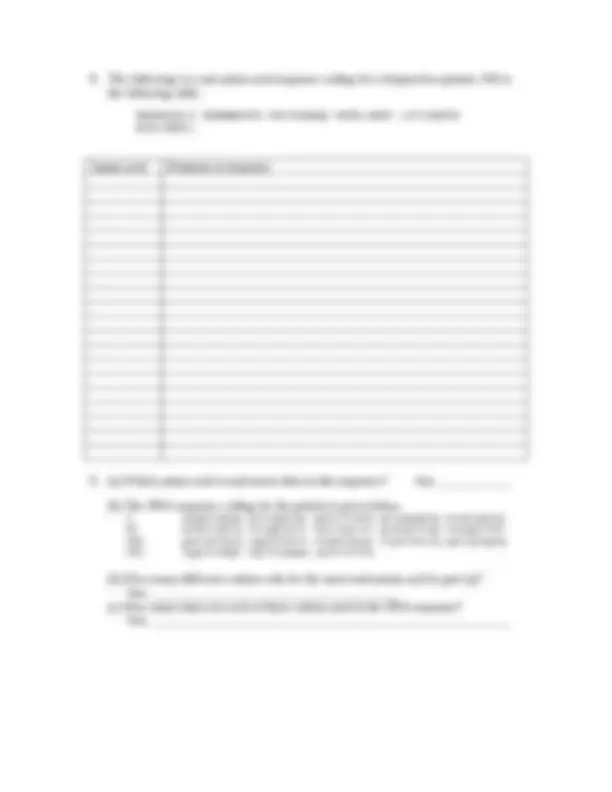




Study with the several resources on Docsity

Earn points by helping other students or get them with a premium plan


Prepare for your exams
Study with the several resources on Docsity

Earn points to download
Earn points by helping other students or get them with a premium plan
Community
Ask the community for help and clear up your study doubts
Discover the best universities in your country according to Docsity users
Free resources
Download our free guides on studying techniques, anxiety management strategies, and thesis advice from Docsity tutors
A seminar handout from a fall 2005 science 1100 class, which covers the basics of dna structure, function, and the role of codons in protein synthesis. Students are asked to write about dna, identify complementary nucleotide bases, and determine codon sequences from a given dna sequence. The document also introduces the concept of synonymous codons and the genetic code.
Typology: Study notes
1 / 4

This page cannot be seen from the preview
Don't miss anything!



Name: _______________________ SCI 1100 Science Seminar (Fall 2005) Monday, October 3, 2:00-4:50 p.m.